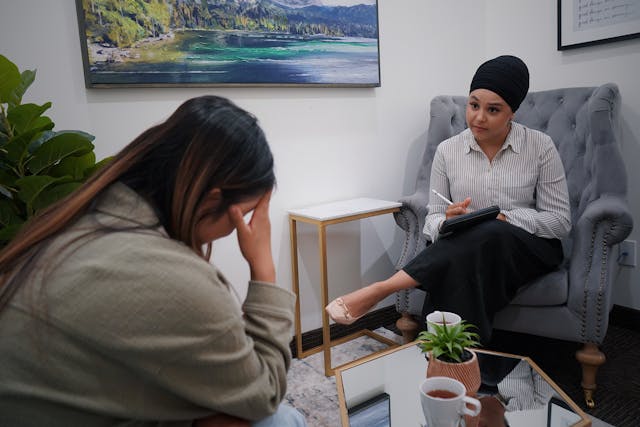Introduction
BIRP notes are essential tools for mental health professionals to document client progress in a structured, efficient way. These notes follow a specific format: Behavior, Intervention, Response, and Plan. Mental health therapists use BIRP notes to track clients' behavior, therapeutic interventions, and how the client responds to treatments.
In 2024, writing BIRP notes is critical for maintaining accurate progress notes, ensuring continuity of care, and aiding healthcare providers in evaluating outcomes. Mastering the BIRP note format allows therapists to document client progress effectively while meeting legal and clinical requirements.
This guide will walk you through how to write BIRP notes, explore the benefits of using this method, and provide best practices to streamline your workflow as a mental health professional.
What is a BIRP note?
A BIRP note is a structured form of clinical documentation used by mental health professionals to record client interactions, progress, and treatment plans. The BIRP note format—Behavior, Intervention, Response, and Plan—helps therapists write BIRP notes efficiently while capturing all critical session aspects. This method allows professionals in the mental health field to track client improvement, observe how a client responds to therapeutic interventions, and develop more effective treatment plans.
BIRP notes also support the therapeutic relationship, allowing clinicians to assess client behavior and response patterns and tailor treatment for future sessions. Professionals must master this process, as accurate notes help improve treatment quality and compliance with legal standards.
The sections of a BIRP note
BIRP notes follow four primary sections. Here's how a BIRP template should be structured:
- Behavior: Start by describing the client's behavior during the session. Was the client engaged in the conversation? Include specific actions, such as participation in deep breathing exercises or showing emotional responses.
- Intervention: In the intervention section, note the therapeutic interventions applied. Be clear about which specific interventions helped the client.
- Response: Track how the client responded to the interventions. Did the client appear more relaxed after using relaxation techniques? Was there a noticeable shift in the client’s emotions or engagement?
- Plan: Outline the next steps, including any adjustments to treatment or upcoming goals. For instance, if the client reports stress or anxiety, you may plan to introduce additional techniques like breathing exercises or discuss eating habits in future sessions.
This BIRP format ensures comprehensive and consistent clinical documentation.
BIRP notes checklist
Now that you know the essentials of BIRP note templates, it's helpful to understand ways to enhance them and provide deeper insight when evaluating your patient's mental health. A BIRP note should go beyond just the primary sections of Behavior, Intervention, Response, and Plan to ensure comprehensive documentation. Here is a checklist to help write BIRP notes faster and more effectively:
- Client reports: Include any relevant information the client reports during the session, such as changes in mood or behavior.
- Client engagement: Note how the client engaged during the session and any participation in exercises or discussions.
- Specific interventions: Record detailed interventions used during the session, like cognitive restructuring or relaxation techniques such as deep breathing exercises.
- Client’s feelings: Reflect on the client’s feelings during the session to provide a fuller picture of their emotional state.
- Client behaviors: Document any behavioral changes, including non-verbal cues, that may impact treatment.
- Intervention section: Ensure that the intervention section is detailed and focuses on the methods used, such as supportive counseling or stress management techniques.
- Behavioral health focus: Highlight the key focus areas within the behavioral health setting, like improving healthy eating habits or physical therapy suggestions.
BIRP notes vs. SOAP notes: How are they different?
BIRP notes and SOAP notes are two of healthcare professionals' most widely used formats for clinical documentation. Both help track client progress and improve the quality of care, but their approach has distinct differences. Here’s a breakdown of their similarities and differences:
Similarities
- Structured documentation: BIRP and SOAP notes provide a clear, organized way to document client interactions, making it easier for healthcare professionals to review the client’s treatment progress.
- Track client progress: Both formats focus on tracking client progress throughout the treatment process and help evaluate the treatment plans' effectiveness.
- Professional use: Both formats are widely used in various healthcare settings, particularly in mental and behavioral health, to ensure that client interactions are well-documented.
Differences
- Focus of the note: BIRP notes focus more on the client’s behavior and therapeutic interventions, while SOAP notes tend to emphasize the client’s presenting problem and the clinician’s assessment.
- Sections: BIRP notes are divided into Behavior, Intervention, Response, and Plan, while SOAP notes follow the format of Subjective, Objective, Assessment, and Plan.
- Response section: In BIRP notes, the response section focuses on how the client reacted to the intervention, while in SOAP notes, the assessment provides a professional evaluation of the client’s current status.
- Writing notes style: BIRP notes tend to be more narrative and focus on behavioral health, while SOAP notes are often more diagnostic and medically focused.
- Client reactions: BIRP notes include the client’s reactions to therapeutic approaches, whereas SOAP notes focus more on objective and measurable observations.
Choosing between these formats depends on the healthcare professionals' needs and the documentation's focus, whether it is behavioral or medical.
BIRP note examples for mental health therapists
Various mental health professionals use BIRP notes to track client progress, document therapeutic interventions, and ensure proper clinical documentation. Below are five specific types of BIRP notes tailored to different professions, along with realistic examples that can help guide the documentation process.
Psychiatrist BIRP note
Psychiatrists use BIRP notes to track medical and psychological interventions related to mental health treatment. The essential component here is a focus on medication management and mental health symptoms.
- Behavior: Client presents with increased anxiety, reporting trouble sleeping and racing thoughts.
- Intervention: Discussed medication adjustments for anxiety and prescribed a low-dose sedative to manage insomnia.
- Response: Client responded positively to the medication plan, expressing relief at having a solution to improve sleep.
- Plan: Follow up in two weeks to assess the effectiveness of the medication.
Psychologist BIRP note
Psychologists often use BIRP notes to document cognitive-behavioral interventions and other therapeutic approaches. The behavior section in this context may reflect cognitive distortions or emotional responses.
- Behavior: Client presents with distorted thinking, expressing a belief that they are "worthless."
- Intervention: Implemented cognitive restructuring techniques to challenge negative thoughts.
- Response: Client’s progress was slow but reported feeling slightly more hopeful after the session.
- Plan: Continue cognitive-behavioral therapy and explore further techniques for self-esteem building.
Licensed clinical social worker (LCSW) BIRP note
LCSWs use BIRP notes to focus on social and environmental factors influencing mental health. Their notes often reflect advocacy, resource connections, and social support.
- Behavior: Client presents with emotional distress related to financial instability.
- Intervention: Provided supportive counseling and referred the client to community resources for financial assistance.
- Response: Client responded well to the referral and expressed motivation to pursue the resources.
- Plan: Follow up on resource utilization and continue supportive counseling.
Marriage and family therapist (MFT) BIRP note
MFTs use BIRP notes to address relational dynamics. Their focus is often on interactions between family members or couples, emphasizing communication and conflict resolution.
- Behavior: Client presents with frustration over communication issues with their spouse.
- Intervention: Facilitated a role-play exercise to practice active listening and open communication techniques.
- Response: Client’s progress was evident as they reported an improved conversation with their spouse.
- Plan: Schedule a joint session with the spouse to further address relational concerns.
Substance abuse counselor BIRP note
Substance abuse counselors use BIRP notes to document behaviors related to addiction, cravings, and relapse prevention. The behavior section in these notes often focuses on substance use triggers.
- Behavior: Client presents with cravings for alcohol after a stressful week at work.
- Intervention: Provided education on relapse prevention strategies and discussed stress management techniques.
- Response: Client responded positively and expressed a willingness to apply the suggested strategies.
- Plan: Continue monitoring cravings and explore additional coping mechanisms during future sessions.
Takeaway
BIRP notes serve as a vital tool for mental health professionals, enhancing the documentation process and ensuring effective tracking of client progress. Utilizing a BIRP note template allows clinicians to systematically record behaviors, interventions, responses, and future plans. This structured approach not only streamlines the writing of BIRP notes but also supports the development of tailored treatment plans.
For those looking to optimize their documentation, Carepatron offers a free BIRP note template or a BIRP notes cheat sheet that can facilitate more efficient clinical note-taking. As mental health professionals prepare for the next session, incorporating these tools ensures that critical information is captured, enabling a more comprehensive understanding of each client’s needs and progress. By mastering the BIRP format, healthcare providers can significantly improve their clinical practice and support better client outcomes.




.jpg)

.jpg)
.jpg)


.jpg)

.jpg)


.jpg)
.jpg)


.jpg)





.jpg)

.jpg)